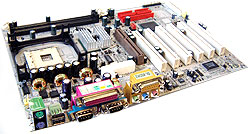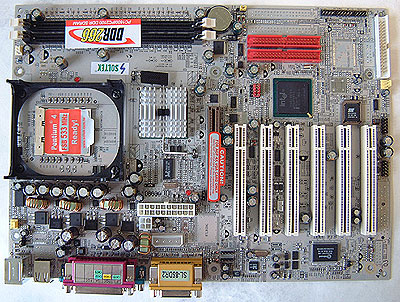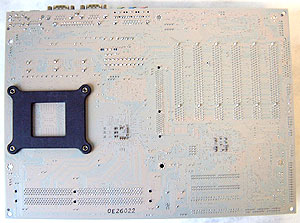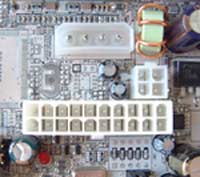Soltek SL-85DR2 i845E Motherboard Review
 It seems
that style and looks are starting to play a larger role in computer peripherals
these days and the Soltek SL-85DR2 is no exception. Using the
very cool looking Silver PCB (like the ones found on the Triplex
videocards), Soltek is bound to catch a few eye's with their SL-85DR2 motherboard.
It seems
that style and looks are starting to play a larger role in computer peripherals
these days and the Soltek SL-85DR2 is no exception. Using the
very cool looking Silver PCB (like the ones found on the Triplex
videocards), Soltek is bound to catch a few eye's with their SL-85DR2 motherboard.
The SL-85DR2 is based on the Intel i845E chipset and has
support for any Pentium 4 on the Socket m478 form factor (400MHz and 533MHz
FSB).
The Sl-85DR2 is Soltek's no frills model, other
then onboard audio (AC-97 codec) there are no other goodies. There are only two
DIMM slots, but that's not really a bad thing since the i845E
chipset only supports four banks of memory. i845E based boards with more
three or four DIMM slots all have the same limitation.
We're always big fans of upgradeability
and Soltek allows for that with the SL-85DR2. With six
32bit PCI slots you shouldn't ever run out of PCI slots. The SL-85DR2 has a 4x
AGP slot with a 1.5V lock, we were a bit surprised that the board didn't have
the usual AGP lock to keep the videocard secure.
| soltek
sl-85dr2 |
 |
Ships with the following:
- IDE ATA66/100 Cable
- FDD Cable
- Driver CD-ROM
- Software CD
- User Manual
- USB Bracket

|
|

|
|
Finally,
with the ICH4 southbridge comes USB 2.0. The ports are inthe usual location just below the
PS/2 ports. There are two more USB headers at the bottom of the
board but Soltek only comes bundle with one USB bracket. Since Intel doesn't believe
in supporting the Ultra/133 IDE standard, Ultra/100 is the fastest the
ICH4 will go.
Not a big
deal though, the performance between Ultra/133 and Ultra/100 is very little
unless you're benchmarking.
 We never like having to drape
the power cables over the CPU fan but at least all the power connectors are in
the same location behind the Audio jacks. Another quirk we found was because the P4 connector was
very close to the main ATX power connector and it was difficult to plug one
in if the other was already populated.
We never like having to drape
the power cables over the CPU fan but at least all the power connectors are in
the same location behind the Audio jacks. Another quirk we found was because the P4 connector was
very close to the main ATX power connector and it was difficult to plug one
in if the other was already populated.
For overclockers and enthusiasts there are a
ton of jumpers on the motherboard. AGP voltage, DIMM voltages,
FSB selection, etc. It would have been nice for Soltek to integrate everything
into the BIOS since it's easier to manipulate things
there.
Because of the relative small sized PCB, Soltek had
to put the IDE ports just under the DIMM slots and the floppy drive connector
could give problems to people with full tower cases like the Inwin Q500.
If you have longer length PCI cards you can only use them in slots 1, 5 and
6.
On a side note, the test
sample's floppy drive connector seems to be defective. It would keep giving me
Floppy drive errors, changing the cable or floppy drive didn't help.

